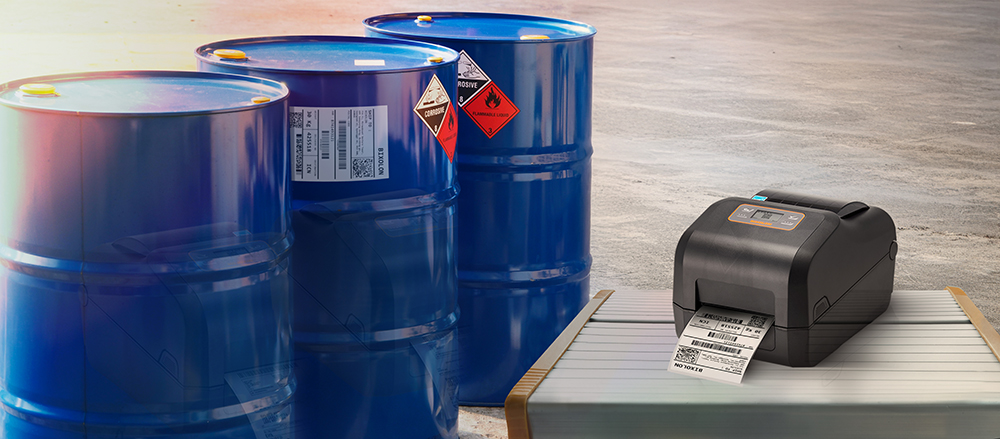In this issue, we speak to Karl Jones of OAMPS Hazardous Industries, a specialist commercial insurance broker founded in 1986. Hazardous industries are their area of expertise, and since their foundation, they’ve worked with trade associations in the chemicals sector, as well as chemical businesses of all sizes.
In addition to providing insurance and handling claims, OAMPS also provide environmental consultancy services via their partners. As Karl explains, “Our appreciation of the potential harm that can be done to the environment and the challenges inherent in the storage, processing or transportation of chemicals, led to the broadening of our services to include environmental consultancy, helping our clients to reduce risk.”
Working With The Environment Agency
Since their foundation, through it’s partners, OAMPS has handled more than 18,000 spillage claims for their clients, none of which have resulted in an environment agency prosecution, reflecting their expertise in consulting with their clients to mitigate risk. “Having a robust spill response plan is vital,” observes Karl.
What does such a plan typically contain?
Pollution Prevention Guidance documents 21 and 22 cover writing the plan and spill response respectively. Although PPG documents have officially been withdrawn in England and Wales, they remain available at www.netregs.org.uk/environmental-topics/pollution-prevention-guidelines-ppgs-and-replacement-series/guidance-for-pollution-prevention-gpps-full-list/). PPG 21 has a template plan to follow. For example, providing contact details for the main stakeholders, including sources of specialist advice and clean-up.
Do you have any advice to share about mitigating the risks of spills or reducing a business’s likelihood of having to make an environmental claim?
“In terms of managing or mitigating the consequences of a spill, our experience shows that getting the right help quickly keeps the incident under control and limits both the costs and any potential damage to the environment.”
“Much of our risk management advice is around strategies to prevent incidents (which could in turn harm the environment), but should a spill occur, we’re there with our partners to support our clients in dealing with any resulting physical damage and to assess the environmental impact. Our policies also offer professional PR help to assist with crisis communications, helping to manage the messages portrayed in the media and to protect a business’s reputation.”
Commercial Insurance Concerns
“Commercial property insurance is more complex than it might at first appear where it pertains to hazardous industries.
Insurers are becoming increasingly concerned at the potential for losses at sites where chemicals are stored, processed or manufactured, and so ensuring best practice is followed in managing the risks inherent to such sites will give businesses a better chance of securing better than average responses from their insurers, both in terms of coverage and premiums.
Product Liability is also a challenge for underwriters; claims costs continue to increase and underwriters increasingly want to have a more in-depth understanding of where materials are sourced and where they will end up, as well as the more obvious issue of the potential for injury and damage to property that are associated with potentially hazardous products.
Traceability is therefore of critical importance to insurers when trying to obtain the best terms, and businesses need to look further their supply chain (both upstream and downstream) than ever before.”
Is theRE anything you’d like to say about the risks associated with supply chains?
As was demonstrated with the fire at a factory in Albuquerque producing mobile ‘phone chips back in 2000 (which saw Ericsson report a $200m operating loss in the following quarter and ultimately concluded with a merger with Sony), a seemingly innocuous incident at a supplier of a single component can have catastrophic impact on the ongoing viability of a business at the end of the upstream supply chain.
It’s therefore vital that businesses understand the potential threats within their supply chain, and have a plan in place to manage any issues arising from suppliers.
Carrying out a Business Impact Analysis will help identify any potential weaknesses within your supply chain, and also shape how your Business Continuity Plan will respond.
Technological challenges
“Another focus of our work is the impact of introducing new technology into a business. The implementation of industrial digital technology can deliver huge benefits for businesses, helping to increase efficiency and profits. However, with new technologies come emerging risks.
“New technology raises questions about the security of a company’s electronic systems. The principle issue is that some of the hardware and software businesses use today was created and installed without much thought being given to the risks attached to them being connected with other systems.
“Legacy systems can be very effective operationally, but they may contain a weakness which could be exploited to allow unauthorised entry into the system. Businesses need to look for the weak links in their systems and have robust security processes in place. The advent of the Internet of Things (IoT) does present more challenges security-wise for businesses.”
Preventing cyber crime
“Cyber crime and cyber threats are increasing. Through a series of events we’re organising, we’re looking to help our clients to understand the risks inherent in connected systems and how these risks could impact their businesses. Using a variety of scenarios, we’re bringing the reality of these risks to life.
“Preventing cyber crime is a priority for all businesses, especially with the advent of GDPR, but for those of us working within the hazardous industries, the risks go beyond issues of data protection to encompass concerns about operational integrity and the consequences of system breaches.
“Significant harm could be caused to the environment or to peoples’ health or safety if a cyber incursion resulted in safety controls being overridden, for example.
“Having the right cyber protection in place, as well as robust processes for managing cyber security, is also important given the updates being made to legislation. The Control of Major Accident Hazards (COMAH) regulations are being revised to include the management of cyber risks, following on from updates to the Network and Information Systems Directive.
Is there any more advice you’d like to share about mitigating cyber risks?
Have a Cyber security policy which deals with the various exposures your business has and clearly communicates the role of your employees in helping protect your business, whilst also engaging expert advice on Cyber security.
The National Cyber Security Centre has published guides for businesses with up to 250 employees which is a useful starting point.
Fit for purpose?
“Whatever insurance cover is arranged, what’s vital is that it’s fit for purpose. Unfortunately, too many companies only discover the insurance they’ve bought is inappropriate when they need it most.
“As a specialist commercial insurance broker, with wide-ranging experience in the chemical sector, this is exactly what we work to avoid. The needs of the industry are quite specific and over 30 years of experience helps us focus on areas of coverage that provide the most relevant benefits to businesses operating in the chemicals sector – keeping them in business.
“Our work is focused on continuing the great levels of service we’ve historically delivered, to be innovative around the cover we provide for our clients and using our collective experience and expertise to try to help them to make fewer, costly claims.”
www.oamps.co.uk










